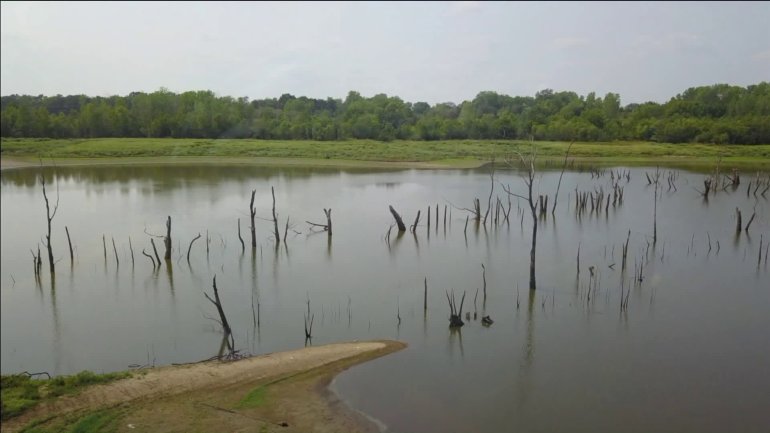Drought Continues to Grip Northeast Missouri
This is an archived article and the information in the article may be outdated. Please look at the time stamp on the story to see when it was last updated.
HAMILTON, Mo. — The exceptional drought continues to plague parts of northwestern Missouri, with some cities and towns' water supplies falling to critical levels.
Zac Johnson, utilities director for the city of Cameron, said water has been a big concern for them for quite some time. Residential water restrictions have been in place since May, and they've now moved to their emergency phase with their water supply dropping below 40 percent.
"We currently have four reservoirs," Johnson said. "Right now, we have pumped our largest reservoir down to a point where we can't pump anymore water out of it."
This has forced the city to set up an emergency pipeline from Pony Express Lake to Grindstone Reservoir. They're hoping to start pumping by the first week of September.
It's great news for short-term relief, but they also have a long term plan in place.
"Cameron has joined the Great Northwest Wholesale Water Commission," Johnson said, "which is in the process of constructing a line from Missouri America in St. Joseph to feed Cameron, Stewartsville and Maysville."
That project won't be completed until 2020, but relief in the long term is in the works.

For Cameron's neighbors 15 miles to the east in Hamilton, conditions aren't looking so promising.
"People in town are worried," said Jean VanIperen, city administrator for Hamilton. "We have growth going on, which a lot of small towns are not seeing. But because of that growth, we have growing pains and infrastructure issues."
From March to October, fans of quilting flock to Hamilton to visit Missouri Star Quilt.
This tourist attraction triples the population of the small town. And with the increased amount of unique visitors, it's putting a bit strain on Hamilton's resources. Water levels at the city's reservoir are down 71 and a half inches.
VanIperen said they've been losing about 2 inches per week, giving them only 12 weeks before they get to the top intake.
The town has never had to use their second intake. Divers are heading in this week to locate it and make sure it is going to be functional.
Meanwhile, Hamilton is looking for a short-term solution, reaching out to neighboring water districts to get connections to them. The problem is they treat their water differently, and you can't mix the two.
The city has asked everyone to cut back their water usage. The local car wash voluntarily closed down in an effort to conserve water. Businesses and residents have cut back their usage by 30 percent.
For residents like Laurie Prince, frustration is building.
"I called the city hall and asked if I could fill up a little kiddie pool, Prince said, "and they told me if they see a pool in my yard, they would give me a ticket for it."
The city pool is closed for the season, and her grand-kids have no where to go to cool off. What really struck a cord — they're using some of the pool water to water the high school football field.
But it's not just the disruption of lifestyle activities that's impacting residents. It's impacting their pocketbooks as well.
Christina Krueger plants a garden every year. She depends on that garden to feed her family year round. This year, she hasn't been allowed to water it, and she has lost all vegetation.
If Hamilton doesn't get help soon, from a neighboring district or Mother Nature, even harsher restrictions could be put in place for businesses and residents.
39.743618 -93.998274
Suggest a Correction
Source: https://fox4kc.com/news/drought-continues-to-impact-northwest-missouri-bringing-water-supply-to-critical-levels/
0 Response to "Drought Continues to Grip Northeast Missouri"
Post a Comment